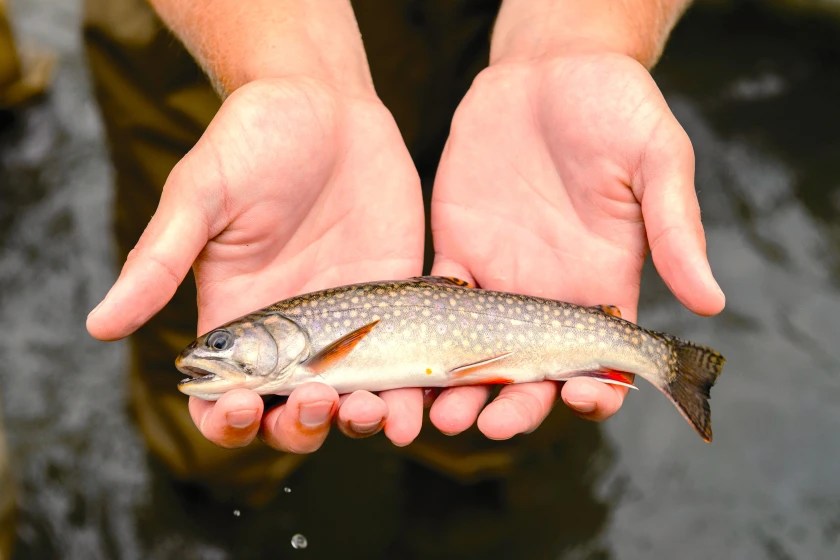
New viruses, including coronavirus, found in Wisconsin fish
MADISON — Researchers at the University of Wisconsin have found 19 viruses in wild fish, most of them never before discovered, including one coronavirus in walleyes that was previously found only in birds.
The new study, published in the journal Pathogens, found the different viruses in 103 fish sampled from Wisconsin lakes and rivers, including walleyes, bluegills, brown trout, sturgeon and northern pike.
So far, the viruses don’t seem to be hurting the fish or impacting overall fish populations, the scientists note, and there’s no indication the viruses can be passed to humans.
“We have no evidence that these viruses are making fish sick. The fish we tested were all healthy,” Tony Goldberg, a professor in UW’s Department of Pathobiological Sciences, told the News Tribune. “It’s possible some of the viruses could make fish sick under particular conditions … when the fish are stressed out for some other reason.
“But all the viruses are new, so we really don’t know anything else about them yet, except that they exist.”
The effort, funded by Wisconsin Sea Grant, is the first of its kind in North America.
Wisconsin Department of Natural Resources fisheries technicians collect trout from a creek near Viroqua, Wis. Blood from the wild fish was tested by researchers at the University of Wisconsin-Madison who found numerous viruses in the fish that no one had seen before. (Courtesy of Bryce Richter / UW-Madison via Forum News Service)
The study found the first fish-associated coronavirus, from the Gammacrononavirus genus, which differs from the type of virus that causes COVID-19. It was found in 11 of 15 walleyes collected by the Wisconsin Department of Natural Resources.
Goldberg stressed that anglers should not be worried.
“None of these viruses can infect people,” he said. “It’s not a risk for people to catch, handle and eat fish because of these viruses. There’s no evidence that these viruses are causing any problems. They may just be part of the natural ecosystem of these fish.”
Of the different species of fish sampled, lake sturgeon blood contained the most viruses, 97% of samples, with brown trout samples showing the least prevalence at 6%.
This virus survey builds on previous Sea Grant-funded research in which Goldberg studied viral hemorrhagic septicemia, or VHS, an often fatal fish disease. The DNR took blood samples from healthy-looking fish across Wisconsin to test for VHS antibodies. They saved the blood and used it for this current study on viruses.
The new findings should help fishery managers when they routinely test the health of fish about to be released into state lakes from hatcheries or fish that are being shipped out of state. Sometimes, those releases are halted over concerns that the fish may carry a disease, and the study’s findings will help managers decide what is normal and what is concerning in terms of fish viruses.
“This is a huge problem for fisheries managers that happens all the time,” Goldberg said. “We recently had a case where there were thousands of muskies that were ready to be released and they came back with an unknown virus. So, do you release them? Do you just keep them there? Do you kill them all?
“Maybe there are viruses out there that are a normal part of the ecosystem, and they just infect a lot of fish, but they don’t cause disease,” Goldberg said.
While anglers shouldn’t be too concerned about the new fish viruses, they can help prevent any potential problems by not moving fish, including baitfish, from one lake to another.
“If you move a fish from one water body to another, you’re moving everything that lives on and in that fish and potentially causing problems,” he said.
The U.S. Fish and Wildlife Service recently designed specific tests for the various viruses and expects to test a larger set of fish blood samples from around Wisconsin. They will map the viruses found so that fisheries managers can tell what’s normal for a particular watershed and whether stocking should proceed or not.
Related Articles
Parts of William O’Brien State Park to be closed for construction until 2025
‘Party for the Parks’ returning to celebrate St. Paul parks in June
Skywatch: The wily rabbit of winter
Where will trout survive in warming North Shore streams?
Mild winter likely set stage for Lake Traverse fish kill

